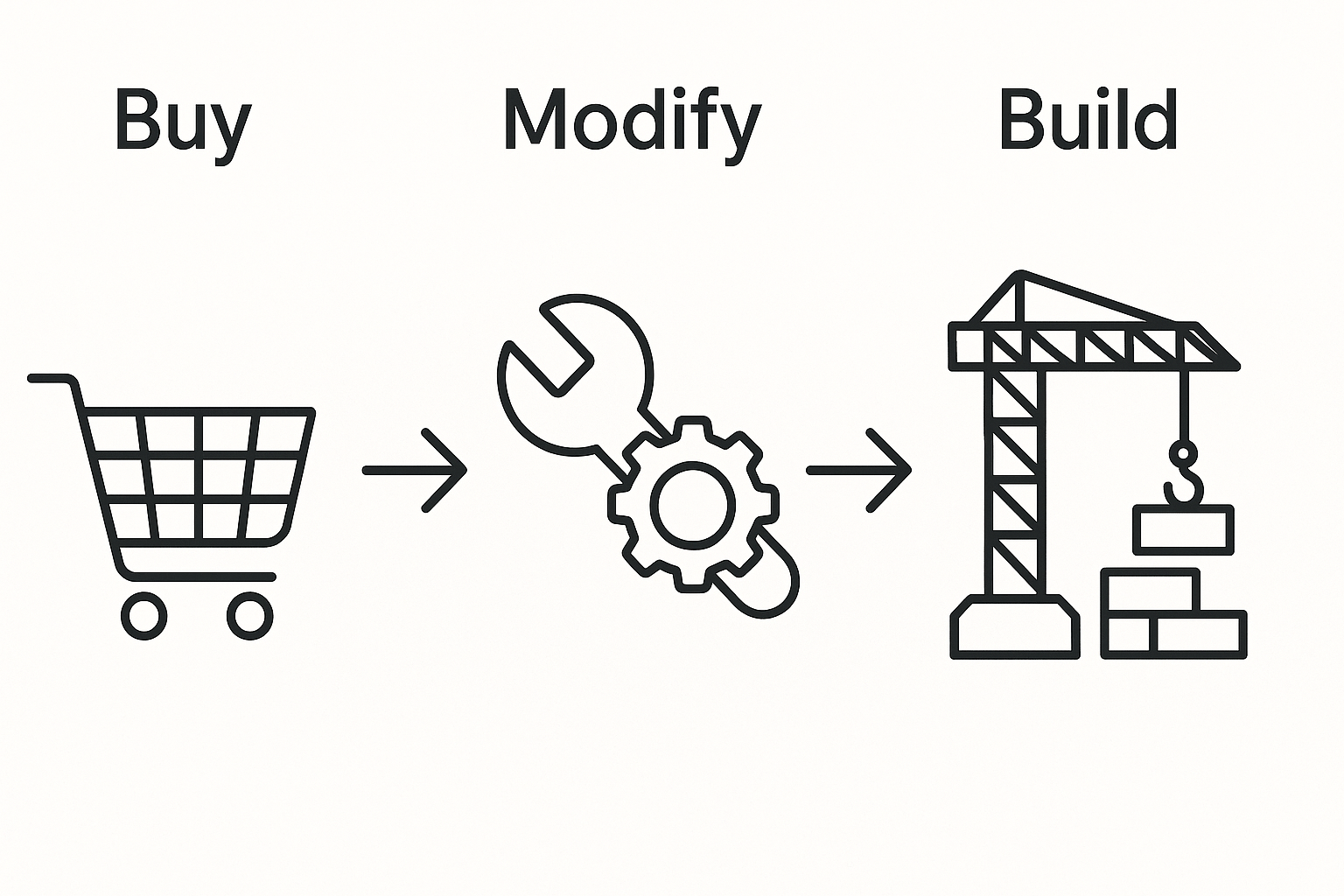There’s a myth in product development: that the only “serious” way to build is to start from scratch. Clean repo, empty PCB, no baggage. It feels pure. It feels like control. But in practice, it’s often the slowest, riskiest, and least pragmatic path you can take.
Our method is different. We call it We Buy, We Modify, We Build. It’s not a framework, not a manifesto. It’s simply how we work when the goal is to get real products into the world — fast, reliable, and with focus where it matters.
Step 1: We Buy (or Adopt)
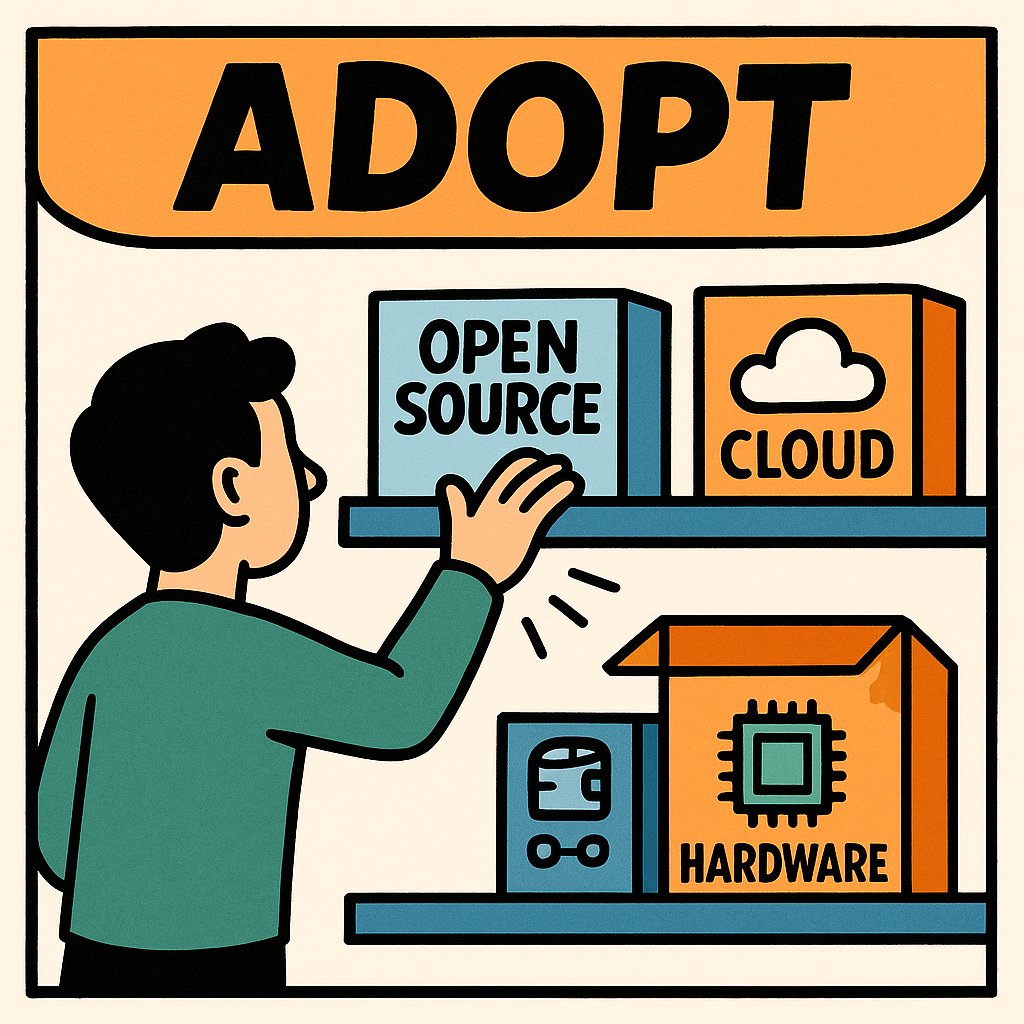
The world is full of good tools. Open-source stacks, commodity hardware, existing SDKs, proven modules. Reinventing them is wasteful.
When we say “buy,” we don’t just mean spending money — we mean adopting existing solutions as the foundation.
- An open-source library that’s maintained by thousands.
- A sensor module tested in the field.
- A standard cloud service that just works.
Choosing right here is a design decision in itself. You evaluate maintainability, ecosystem health, license. You decide what’s good enough to stand on. And the moment you adopt, you already have something working.
Step 2: We Modify
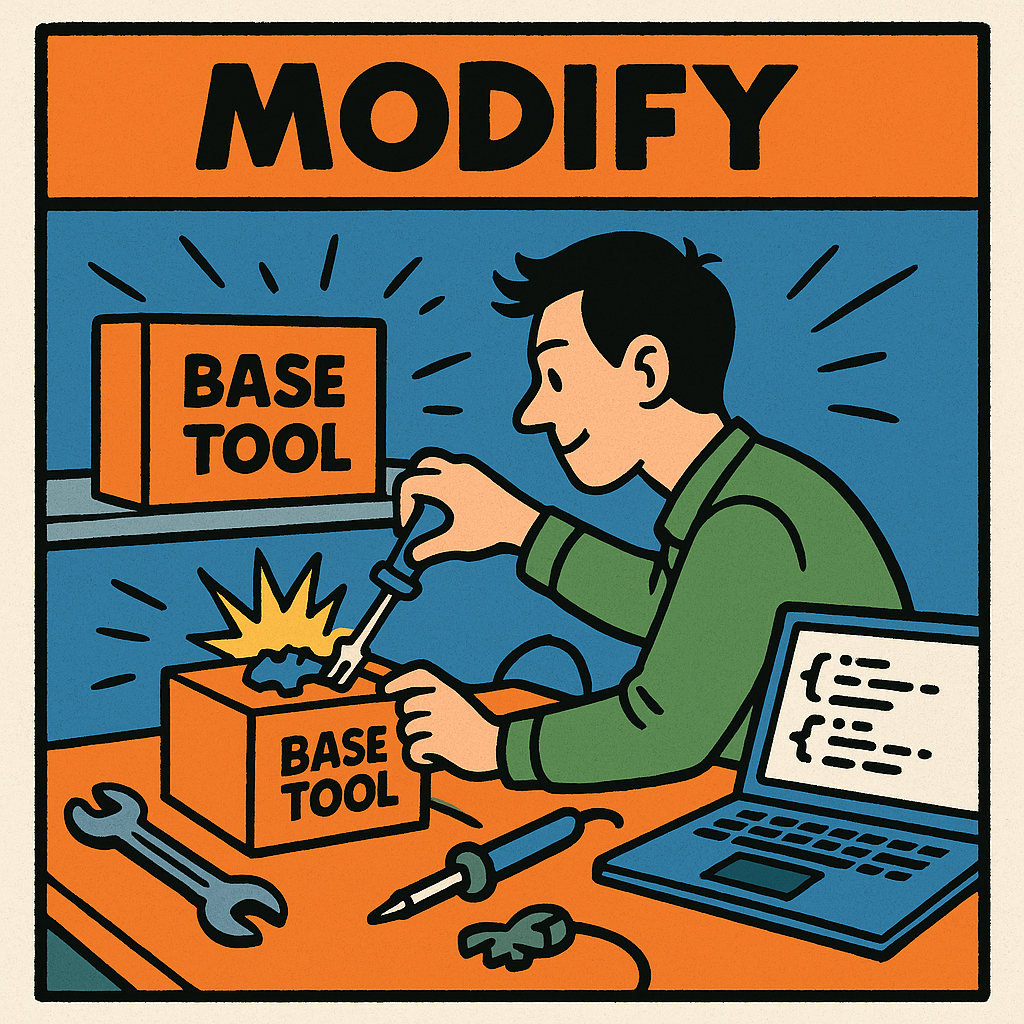
The second step is where value starts to appear. We don’t just consume — we adapt.
That could mean wrapping APIs, patching a driver, trimming a framework down to essentials, or injecting hooks where we need flexibility.
The trick is discipline. You don’t fork blindly, you don’t rewrite upstream. You isolate changes, keep boundaries clean, and stay upgrade-friendly. The goal is to bend the tool to fit our needs without breaking it forever.
This is where 80% of the differentiation lives. It’s where the generic becomes specific.
Step 3: We Build
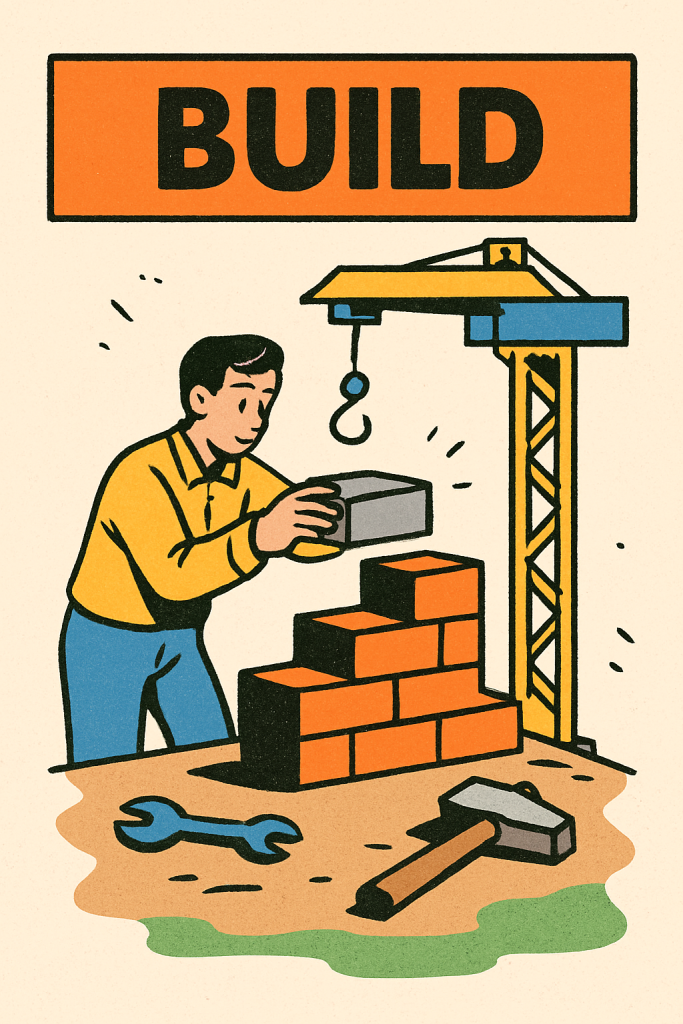
Finally, we build. But only the parts that truly need to be ours. Parts that are generating IP or reducing risk.
This is the custom algorithm, the integration that nobody else solved, the UI layer that defines experience. It’s the innovation that sits on top of the foundation.
By the time we get here, we already stood on something stable. We didn’t waste energy rebuilding bricks. We invested it into carving the unique shape of the product.
Why this works
- Speed: You start with something running, not a blank page.
- Focus: You spend effort on what differentiates, not on plumbing.
- Resilience: Using battle-tested components lowers foundational risk.
- Flexibility: Modular adoption means you can swap, upgrade, or discard later.
It’s not perfect. Dependencies can lock you in, modifications can pile up into debt, and sometimes adapting the wrong tool costs more than starting fresh. But with discipline, it’s a net win — every time.
A Real Example
Say we’re building an IoT device for air quality.
- Buy: We adopt Zephyr RTOS, use commodity VOC sensors, and an MQTT library.
- Modify: We patch the drivers for low-power sleep cycles, unify sensor APIs, add resilience to network reconnections.
- Build: We implement our anomaly detection algorithm, edge logic for control, and the dashboard interface.
We didn’t waste six months rewriting an OS. We didn’t hack together sensors from scratch. We focused on the part that makes the product ours.
Culture, not just method
This approach only works when the team culture supports it.
- “Don’t reinvent unless it’s necessary” has to be a reflex. Of course beware of making architectural mistakes by adopting something that is not suitable for you!
- Clean boundaries and modular wrappers must be the default.
- Tracking upstream changes and documenting deltas is part of the job.
In practice: every design review asks the same question — do we really need to build this from zero? If not, we buy, we modify. Only when the answer is yes do we build.
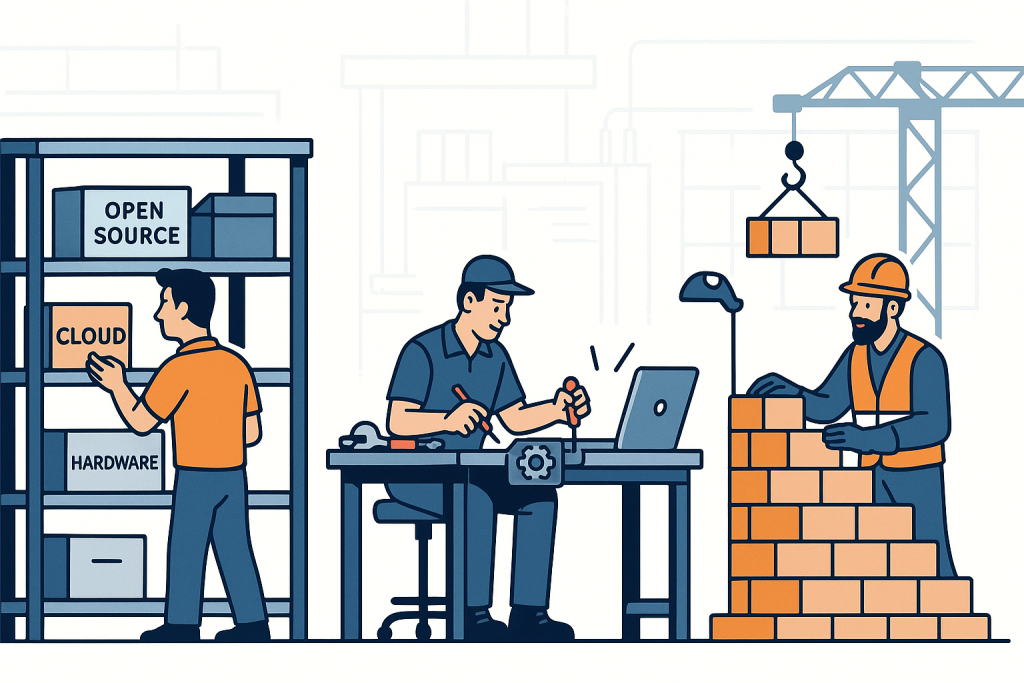
We Buy, We Modify, We Build is not laziness. It’s pragmatism. It’s allocating energy where it matters. It’s acknowledging that most of the world doesn’t care how beautifully you rewrote a network stack — they care that your product works, ships, and solves a real problem.
That’s the method. It keeps us fast, grounded, and focused. And most importantly — it gets things out of notebooks and into the real world.
